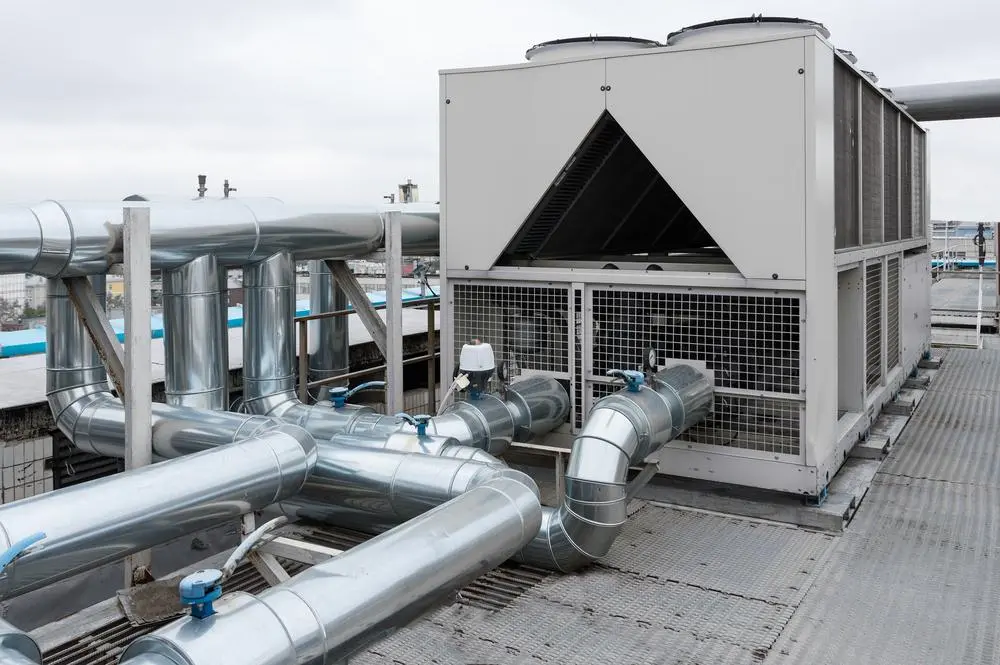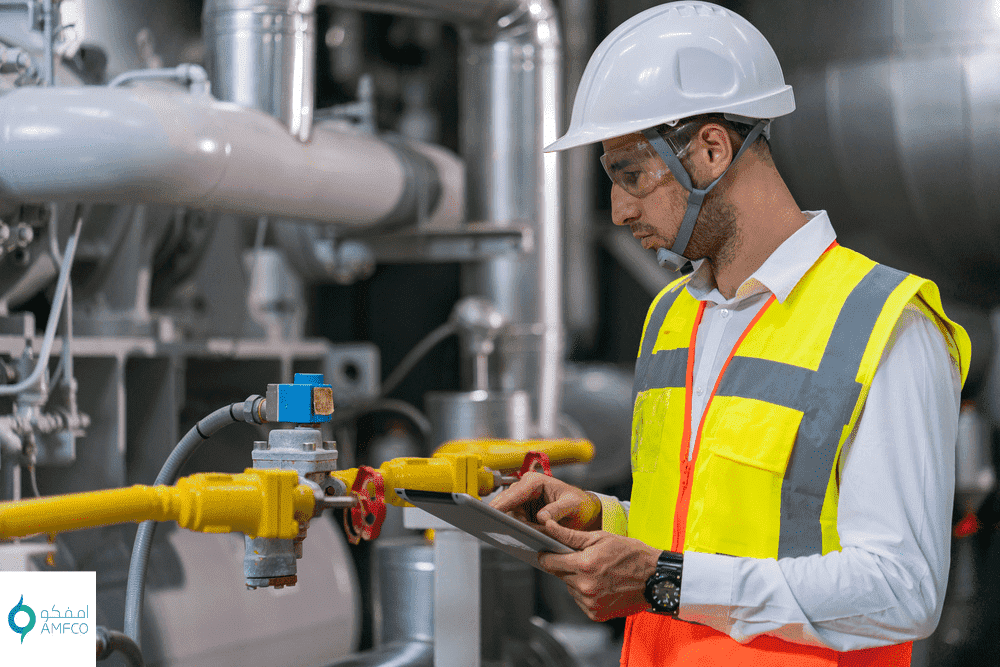Introduction:
The modern commercial or office buildings consist of many sophisticated systems. These systems include foundation and support structures, electrical and lighting plumbing, and fixtures. Another major part of any building that is often taken for granted by its inhabitants is the Components of an HVAC system. HVAC stands for heating, ventilation, and air conditioning.
In this unit, we will identify the purpose and goals of the HVAC system along with the basic parts of the HVAC system. In this read, we will also highlight how these parts work together.
What is an HVAC System:

Air quality is an essential consideration in maintaining the productivity, comfort, and health of the Occupants and should not be trivialized. The HVAC system is responsible for maintaining indoor temperature and air quality within narrow and comfortable ranges. If air quality and temperature are not maintained, occupant comfort in the workplace can suffer, directly affecting productivity and morale.
Related Blog: What is an HVAC System
The Goals of an HVAC system:
When examining the design of an HVAC system, we must remember the various roles that the HVAC system plays. We all know that when we’re cold we turn the thermostat up for more heat. And when we’re hot, we turn the thermostat down.
So, the HVAC system components keep us comfortable by adjusting the room’s temperature. Equally important, the HVAC system must keep occupants comfortable by supplying fresh air to a room. If we introduce a significant proportion of fresh exterior air and alleviate carbon dioxide buildup, occupants experience better health and performance gains. Studies have shown a direct link between CO2 levels and short-term sick leave in office workforces.
a) Air Filtration:
However, our concerns regarding the HVAC system and occupant health do not end here. In heavily air-conditioned, energy-efficient environments, recirculated conditioned air can carry contaminants that contribute to respiratory illness.
It is the HVAC system’s job to remove contaminants and dust from the air using filters at various stages. As important as this consideration is in an average office or commercial building. This feature is critical in facilities that contain clean rooms, medical facilities, or hazardous materials.
b) Efficiency/Economy:
Finally, with the spiraling cost of fuel, HVAC systems must also be efficient and economical. Energy-efficient HVAC systems might incorporate.
c) Variable Air Volume Designs.
Components designed for operation at low pressures, digital control systems, mechanisms for reclaiming heating or cooling benefits from recirculated air, and high-efficiency ECM fan motors.
Many price products are designed specifically with energy efficiency in mind.
By understanding the importance of occupant comfort, we realize the significance of smart HVAC systems in building design.
It’s responsible for controlling the temperature in the environment, providing fresh air to the occupants, and filtering out dust and contaminants while operating in an energy-efficient and unobtrusive manner.
The following section covers the different parts of the HVAC system that make up a basic HVAC system. once we understand the range of components involved. We can better understand HVAC control system companies and the reasons for choosing system components from the price’s extensive product line.
Parts of an HVAC System:

The HVAC system installed in a commercial or office space differs greatly from the heating and cooling system you might be familiar with in your House. In your home, your heating system is set up to deliver warm air during the winter and cool air in the summer. It does this using a furnace or an air conditioner and a common set of ducts.
When your HVAC monitoring system thermostat detects that your home is too cold, it sends signals to the furnace which then delivers warm air simultaneously to all parts of your House. Note that it is typical to have only one thermostat, and it does not account for temperature variation in any other rooms.
Likewise, in the summer, your HVAC thermostat will detect when your home has become uncomfortably warm. It will signal your central air conditioning system to deliver cool air simultaneously to all parts of your House. So, let us talk about the parts or components of the HVAC system; this will help you find out how the HVAC system works.
i) Loads:
Again, note that your thermostat is measuring the temperature in only one room. The conditions in an office or commercial space are quite different; higher concentrations of people and equipment will generate more heat. Making air conditioning or recirculation of air more important than providing heat.
Although the air handling equipment is centralized, different rooms and regions in the building will have different needs for heating and cooling. These needs are called loads because they place a load or demand on the HVAC system. These loads can come from equipment, people, weather, and many other factors. In the simplest case, we address this by providing a constant supply of cool air, which is then managed by the HVAC distribution system.
ii) Chiller or Air Conditioner
The chiller or air conditioner utilizes heat exchangers and circulated fluid organs to cool the air that is passed through it.
iii) Air Handler:
The air handler is a fan or a blower that moves air throughout the building’s ductwork. Axial or centrifugal fan types may be found in the air handler.
iv) Air Filters:
Depending on the requirements of the occupants and the activities in the building. Various grades of air filters are used in the system.
General-purpose air filters will be included in the air handler itself, while more sophisticated filters, such as HEPA filters, may be used in the downstream ductwork.
v) Ductwork:
Round, square, and rectangular ductwork provide a pass for the conditioned air from the air handling unit to the environment.
vi) Damper:
A damper consists of one or more blades that can be used to control the amount of airflow through the duct.
Manual dampers are used to ensure that different parts of the building receive proportional ventilation based on area and demand. Automated dampers may be installed at firewalls that close in the case of a fire.
vii) Terminal Unit
A terminal unit is a device that uses an automated damper to control the amount of air that is delivered to a room or region. An electric pneumatic or digital actuator typically controls the damper. Which in turn is regulated by a thermostat.
viii) Zone:
A set of adjacent rooms or regions in a building that have identical heating and air conditioning needs is called a zone. It is typical to assign at least one terminal unit and corresponding thermostat to each zone. Price manufactures many different varieties of terminal units to suit all types of building needs. We discuss terminal units in greater detail in the forthcoming terminal units section.
ix) Heating Coil:
Heating coils may be installed after a terminal unit to provide heat on a zone-by-zone basis. As mentioned previously, buildings with a high number of occupants may not require extensive heating even during the coldest months of the year.
x) Lining or Attenuators:
Heating coils offer an efficient way of providing heat for those few areas that require it and are controlled by the same thermostat system as the terminal unit. Various types of linings are available to dampen noise within a duct.
A short length of line ductwork called an attenuator is often installed following the terminal unit to dampen discharge noise.
xi) GRDs:
Ultimately, the test of an HVAC system lies in its ability to deliver conditioned air to the occupant. Air from the ductwork enters the occupied space through grill registers or diffusers, often called GRDs.
The term grill is commonly applied to any air outlet or intake that consists of a square or rectangular face and neck and whose facial appearance is made up of louvers that may be used to deflect the air. A register is a grill that has one or more adjustable blades or dampers that control the amount of air that flows through. A diffuser is an air outlet that incorporates structures such as veins,louvers, perforations, and other features for distributing and directing air. The diffuser’s job is to direct the airflow throughout the occupied space in the most efficient manner possible.
xii) Return Inlets:
Once air enters a space, where does it go? Air circulates through the return inlets and returns to the air handling unit. Unlike an air outlet, a return requires no sophisticated veins; however, the relative location of the air inlets and outlets can be critical to the efficiency of the system.
Upon returning to the air handler, a certain portion of the return air is exhausted and replaced with fresh exterior air. In an average office, building, or commercial space, approximately 10 to 20 percent
The preceding information offers a very basic overview of the components that make up an HVAC system.
For more details on your customized smart HVAC system components and the price catalog, you should contact your HVAC System manufacturing company and discuss all the things in detail.
Conclusion:
In the realm of modern buildings, the unsung hero is quietly ensuring comfort and air quality is the HVAC system. These intricate parts of the HVAC system work tirelessly behind the scenes of every residential and commercial building and play a vital role in maintaining a perfect indoor temperature for you. They do not just adjust the temperature, but they maintain the air quality by filtering out contaminants and circulating fresh air.
The HVAC system plays a vital role in the wheel of occupant satisfaction, morale, and productivity. So, next time you step into a cozy office or commercial space, remember to give a nod to the silent workhorse, keeping things just right. Do not compromise on quality, choose the best HVAC system that meets the expertise with innovation.
FAQs:
What are the 4 main components of an AC system?
The four main components of an AC system are the compressor, condenser, expansion valve, and evaporator. The compressor is used to pressurize the refrigerant; the condenser is used to dissipate the heat. The expansion valve function is to regulate the refrigerant flow, and the evaporator absorbs heat from the air to cool it down.
What is the HVAC cycle?
The HVAC cycle, or Heating, Ventilation, and Air Conditioning cycle, involves:
- The processes of heating or cooling air.
- Distributing it throughout a building.
- Regulating indoor temperature and air quality.
It typically includes stages like air intake, filtration, heating or cooling, distribution, and exhaust.
What are heating and cooling system types?
Heating systems include furnaces, boilers, and heat pumps, which generate warmth for indoor spaces. Cooling systems include air conditioners, evaporators, cooling ventilators, fans, and heat pumps, which remove heat from indoor air. And ensures the maintenance of comfortable temperatures.
What is the full form of VRF in HVAC?
The full form of VRF in HVAC is Variable Refrigerant Flow. It refers to a technology that allows for varying the flow of refrigerant to indoor units based on cooling or heating demand, offering energy-efficient temperature control in commercial and residential buildings.
